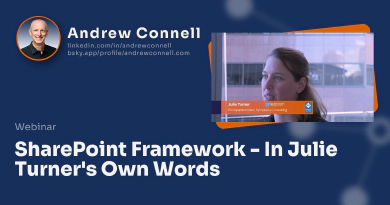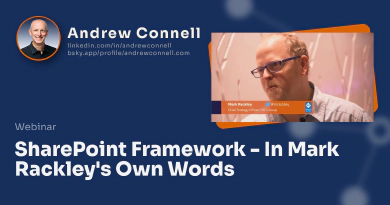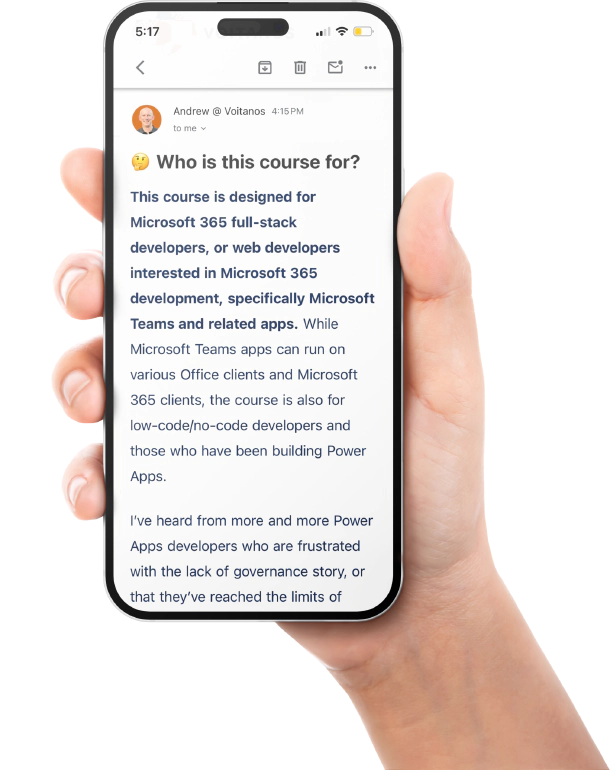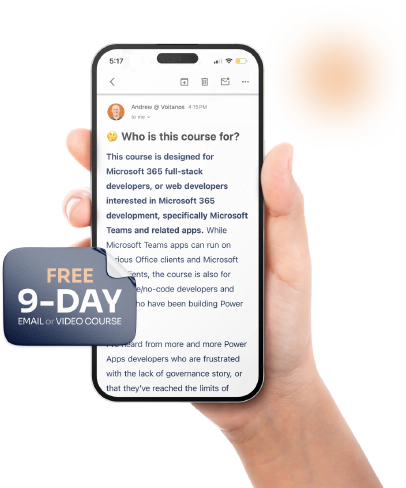This is one installment in our series “In Own Words” by Voitanos asking experienced SharePoint developers to share their thoughts on the new development model for SharePoint - the SharePoint Framework. In this series, we ask each person a series of questions and let them share their thoughts.
Wictor Wilen
My name is Wictor Wilen. I work for Avanade out of Sweden as SharePoint MVP. I’ve been working with SharePoint for quite some time, both on the developer side and the infrastructure side.
What’s your background as a SharePoint developer?
I started way back when we had VBScript to customize SharePoint, but went into the DotNet world later, started and focused very much on Web Parts, and wrote a book on Web Parts once upon a time, before I moved over to the infrastructure for a little while. I’ve continued with the development, building knowledge systems, et cetera, and now with the SharePoint Framework the way I build stuff has changed totally, and it’s been an interesting journey going from the server side to the client side.
How much time have you spent with the SharePoint Framework?
About a year ago we started seeing the first things of the SharePoint Framework, and what we saw then was under NDA, but I started working with those concepts, with TypeScript, with React, looking at that and see how we could take the SharePoint Framework and use the modern client-side rendering et cetera. But for real production use, not that long actually. It’s been in a quite long beta period, but we just now started moving our old artifacts, client-side script, Web Parts et cetera, to the SharePoint Framework.
What is your impression of SharePoint Framework today?
Right now I see the SharePoint Framework very much as a user interface extensibility story. It’s not the same thing as when you did a full-featured, service side Web Parts and integration to other systems. That’s not where the SharePoint Framework is today. Hopefully, we will see more opportunities to make more than just UX extensibility going forward, using external APIs, et cetera et cetera.
What is your impression of the SharePoint Framework roadmap?
I think they’ve done a good job. They have a good version one out there, making sure that the UX parts are working and that they have the solid foundation for this. I think what we’ve seen and what we heard are good version two of it. They have understood the requirements from the field, they listened to our feedback. I think we and the SharePoint product team are in a good spot right now, and I think as I said earlier today to a colleague, I think I will be SharePoint for quite some time.
What is your favorite part of the SharePoint Framework?
My favorite part is that it’s a native Framework, and that we can, if I look from another side, not just my developer side but from a bigger enterprise perspective, this is a good way of actually doing these client-side customizations that we’ve been doing with clients-side Script Parts, et cetera earlier. We can do it in a more governed way and a more organized way. Yes I know there are some issues with the ISVs and the store and that kind of stuff, but this is a good step one to actually make a better story for governed Web Parts, if I say so.
What is the one thing you would add to the SharePoint Framework?
Right now it’s the integration to the Microsoft Graph. Once we can get the Microsoft Graph working seamlessly with the SharePoint client-side Web Parts, I think we can make much better and much more interesting stories and scenarios for our clients.
What is the one thing you would change to SharePoint Framework?
I would change … That’s a good question. I would have it more open in terms of what kind of Frameworks you choose and are allowed to use. Yeah, you’re allowed to use whatever you want but there are … Microsoft has taken a strong dependency on React and where you can use Angular if you want to but you have a lot of benefits using React, but having that strong dependency in my opinion will … Are not the best option right now. That would be great if we had more options out of the box.
What is the biggest challenge with SharePoint Framework?
The challenge that I’ve seen and what we’re seeing with our dev teams is the learning curve to start with, that you have to go TypeScript, you’ve got to learn or know JS Gulp and Webpack. That is quite a big step to start with. Once you get over that hill or step, then it’s much smoother and nowadays I don’t bother at all but that first step, and it’s a big change from how we used to do stuff.
Predict the future - Where do you see the SharePoint Framework Going?
I think as I said, the SharePoint Framework is a good solid foundation in version one now. I think that since Microsoft are using this as a first part in building their own stuff, we will have proper better support and not have a new model within two years. Of course, the model will change and hopefully not into a new model. Hopefully it more will evolve over time and we know where Frameworks come and go, requirements come and go, et cetera but I think this is a good start and we see a lot of progress and I’d like to see perhaps even more, smaller updates along the road and not just waiting 12 months for a big drop. I would like to see new features coming in every third or sixth month or something like that instead.







